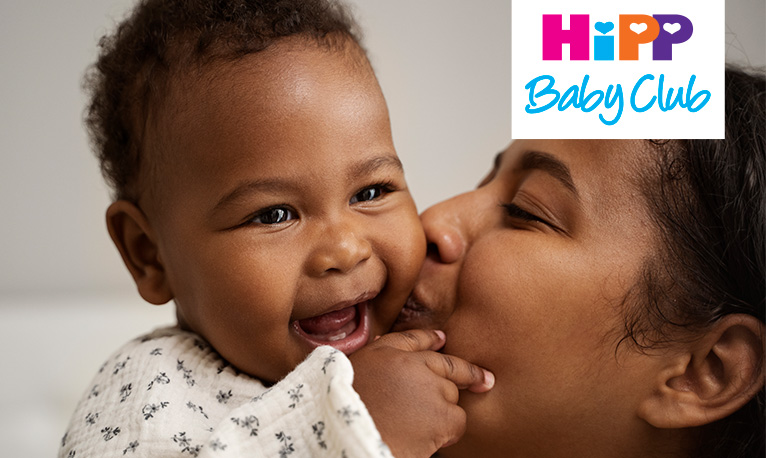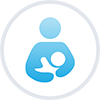Nappy advice

Nappy changing
As you approach the arrival of your new baby, nappy changes may be one of those things that you find daunting, but the good news is that it’s not really so hard. (And trust us, with the average baby needing more than 4,000 nappy changes between birth and potty training, you’re going to get very good at it!) Here’s a step-by-step guide – gas mask optional.
Be prepared. Even young babies can be surprisingly squirmy, and it’s best not to take your hand off them during a nappy change – even for a second or two. So make sure you have everything you need in arm’s reach:
- Cotton wool or baby wipes for cleansing
- A clean, dry cloth or tissue to dry your baby’s bottom and creases
- At least two clean nappies, just in case (you’d be surprised how often the fresh one gets dirty during a change!)
- A fresh set of clothing, in case of leaks/accidents
- Nappy sacks or a bin to put the used nappy in
- Any barrier cream you may want to apply to help ward off nappy rash
You don’t necessarily need to invest in a big, fancy changing table, but it does make good sense to have a spot in the house set up for changing, with a large and easily-cleaned surface and all your supplies close at hand. (Top tip: You’ll often find changing tables and other nursery furniture going cheap or even free on local selling sites.)
- Take it all off. Undress your little one and lay your baby on the mat. Unfasten the tabs on the nappy, but don’t take it off just yet.
- Make a first pass. Pull down the front half of the nappy and use it to wipe downward to remove the majority of any poo or wee. (If your baby is a boy, you might want to cover his penis with a cloth when you do this – the fresh air often leads to an impromptu shower otherwise!) If you use cloth nappies with a separate cover, just use the inside part of the nappy for wiping.
- Get serious. Fold the dirty nappy over itself under your baby’s bottom, to keep the changing mat clean. Wipe in front first, using a clean wipe or moistened cotton wool. (Make sure to wipe baby girls from front to back, to prevent infections.) Then hold both the baby’s ankles with one hand and gently lift. Use a new wipe to clean the bottom thoroughly, including any skin creases.
- Nappy-free time. Let your baby air-dry for a minute, or pat dry with a clean tissue or cloth. Apply a small amount of barrier cream if necessary.
- Nice and fresh. Put the clean nappy under your baby’s bottom, making sure the waistband comes up to belly-button level. If you have reusable nappy covers with liners, put the liner on first, then add the cover afterward.
- Wrap it up. Pull the front half up over your baby’s tummy. (Top tip for boys: point the penis down to help ward off leaks!) If your baby still has the umbilical stump, you can fold the front part of the nappy down to make sure it’s not rubbing.
- Nearly there. Fasten the tabs or snaps snugly, but not tightly. Then get your baby dressed and dispose of the dirty nappy (or rinse and soak, for cloth nappies)
- Soap and water. We’re sure you won’t forget this bit, but make sure to wash your hands thoroughly!
Nappy rash – what causes it and how to prevent it
Nappy rash can be caused by a number of things, such as accumulated moisture, friction from a too-tight nappy, and bits of wee or poo that get missed during a nappy change. Mild cases may just cause a bit of redness in the nappy area, but if left untreated, these areas can become very red, weepy and irritated, and can even lead to infection – not to mention a lot of discomfort for your baby!
Thankfully, there’s a lot you can do to prevent nappy rash from happening, or to stop it in its tracks before it gets serious. The key to prevention is to follow the “ABCDE rule”:
A: Air. Trapped moisture irritates your baby’s delicate skin and encourages germs to grow, so make sure your baby’s nappy area is thoroughly dry before putting on a clean nappy, and give your little one some nappy-free time (on a towel, unless you’re feeling brave!) whenever you can.
B: Barriers. Even the best nappies can’t whisk away all the wee and poo from your baby’s skin, so coating delicate areas with a layer of barrier cream will give an extra bit of protection.
C: Cleansing. This one’s particularly important, because the longer your baby’s wee and poo are in contact with the skin, the more likely it is to become irritated. Check your baby’s nappy frequently (and we do mean frequently - newborns can wee up to 20 times a day!) and be thorough with the wipes or cotton wool, especially in skin folds where residues can hide. Again, gently pat or blow the skin dry before putting on a clean nappy.
D: Diapers. (Well, nappies, really.) Choose nappies that have a high absorbency rate, and make sure they fit correctly – you should be able to fit a finger between your baby’s belly and the top of the nappy.
E: Education. Knowing what causes nappy rash is the first step to preventing it – so congratulations, you’ve already ticked this box!
Giving nappy rash the boot
Sometimes, no matter how thorough you are, your baby may get a nappy rash. If it’s a mild redness, some extra nappy-free time, combined with gentle, thorough cleansing and a good dab of barrier cream, may do the trick.
But if your little one’s nappy area is bright red, moist and painful, it’s time to contact your chemist, GP or health visitor. They will be able to recommend a cream or lotion with a stronger anti-inflammatory and disinfecting action to help give nappy rash the boot once and for all.


